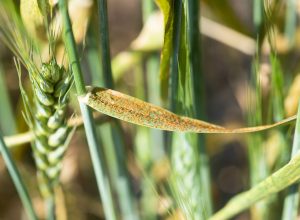Plants, people and the next pandemic

R-numbers, fomite versus airborne transmission, droplets versus aerosols, mRNA and viral vector vaccines. For over a year the argot of epidemiology, virology and other scientific and medical disciplines has seeped into everyday language, as people across the globe grappled with the unprecedented challenges of the COVID-19 pandemic.
Meanwhile, scientists and communicators have struggled to limit the spread of misinformation and ensure that reliable facts are what ultimately goes viral.
As the world is still fighting to handle the COVID-19 crisis, what are the messages and lessons that we must adopt now to better prepare for future challenges?
Global agriculture is a key battleground
Globalization, climate change, ecosystem degradation and biodiversity loss are key variables in the growing threat of infectious disease outbreaks. Agriculture overlaps with each of these processes and is vulnerable to the disease risks they amplify.
Former director of the International Maize and Wheat Improvement Center’s (CIMMYT) Global Wheat program, Hans Braun, recently stressed the parallel between what we have witnessed with COVID-19 and disease threats facing global agri-food systems. “The epidemiology models for humans … we see now have a lot in common with plant epidemiology,” Braun said in a conversation on wheat diseases. There are currently over 1,300 pests and pathogens known to infect agricultural crops worldwide.
“When it comes to epidemics, what applies to humans applies to plants. If there is a new race of a given crop disease, in that moment, the plant does not have a defense mechanism, like humans in the case of COVID-19, because we haven’t developed any immunity,” Braun explained.
As with a human pandemic, investments in prevention, containment and preparedness measures — such as the global wheat rust monitoring systems managed by the Borlaug Global Rust Initiative at Cornell University and CIMMYT — are of key importance. “If ‘doomsday’ happens, it will be too late to react,” Braun said. “At present, with a human pandemic, people are worried about the supply chain from food processing to the supermarket. But if we have an epidemic in plants, then we do not have the supply chain from the field to the food processing industry. And if people have nothing to eat, they will go to the streets and we will see violence. We simply cannot put this aside.”
Agriculture accounts for 30% of global GDP, yet only 5% of global research and development investment goes to the sector. “If there is any flip side to the COVID-19 disaster, it is that hopefully our governments realize that they have to play a much more serious role in many areas, in particular public health and disease control in humans but also in plants,” Braun said.
The butterfly and the bulldozer

The exponential growth trajectory of a disease outbreak can lead one to think of the famous butterfly effect. A single fateful encounter between a host and a pathogen can lead to world-shaking consequences. However, this overlooks how human activity is creating massive environmental and ecosystem changes that impact the likelihood and severity of future disease outbreaks.
Recently Frédéric Baudron, systems agronomist at CIMMYT, and Florian Liégeois, virologist at the Institut de Recherche pour le Développement (IRD) recalled that, “60% of infectious diseases are zoonotic, meaning that they are spread from animals to humans, and 72% of these zoonoses originate from wildlife.” They noted that biodiversity loss caused by “land use changes, generally due to changes in agricultural practices, has been the leading driver” of recent zoonotic disease outbreaks.
“There are at least three mechanisms at play,” Baudron and Liégeois explained. “First, increased contact between wildlife and humans and their livestock because of encroachment in ecosystems. Second, selection of wildlife species most able to infect humans and/or their livestock — often rodents and bats — because they thrive in human-dominated landscapes. Third, more pathogens being carried by these surviving wildlife species in simplified ecosystems. Pathogens tend to be ‘diluted’ in complex, undisturbed, ecosystems.”
Reducing the impact of our global agricultural system on biodiversity will be a gargantuan, complex task requiring a global effort like the Paris Climate Agreement, they argued. Policies incentivizing sustainable intensification and the growth of supportive markets are part of the solution. “But these measures are likely to be insufficient alone,” Baudron and Liégeois pointed out, “as a large share of the global food doesn’t enter the market but is rather consumed by the small-scale family farmers who produce it.”
CIMMYT and, by extension, CGIAR are in a position to play an important role in addressing this challenge. “Interestingly, many of these [zoonotic disease hotspots] are located in regions where CIMMYT’s activities are concentrated: Central America, East Africa and South Asia,” Baudron and Liégeois said. “This, in addition to the fact that agricultural changes are a major driver of the emergence of zoonoses, means that CIMMYT researchers may have a role to play in preventing the next global pandemic.”
Partners and funders
Borlaug Global Rust Initiative at Cornell University, CGIAR, and Institut de Recherche pour le Développement (IRD).